The Chesnut Cottage Bed & Breakfast
Introduction
Text-to-speech Audio
Images
The Chesnut Cottage Bed and Breakfast in Columbia, South Carolina.
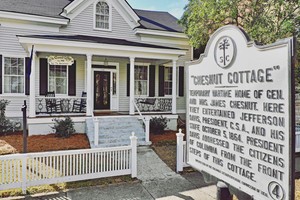
Mrs. Chesnut's home in Columbia in the last year of the war.
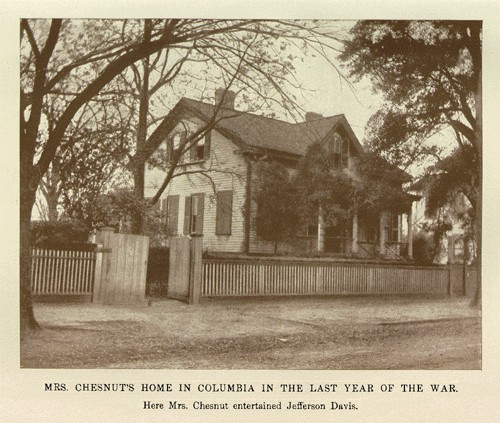
Mary Chesnut and her husband, Gen. James Chesnut Jr. on their wedding day in 1840.
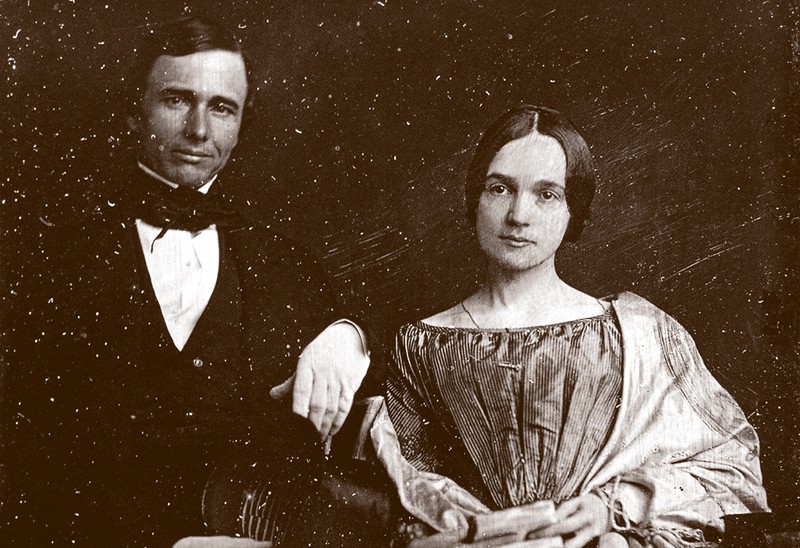
Mary Chesnut's Civil War by C. Vann Woodward
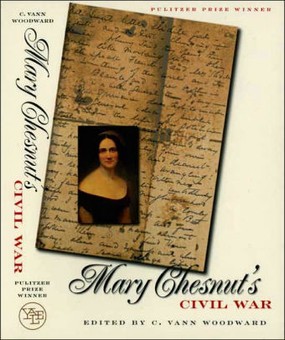
Mary Boykin Chesnut
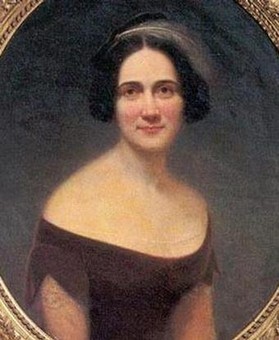
Backstory and Context
Text-to-speech Audio
The Chesnut Cottage entertained such prolific characters in American history as the president of the C.S.A, Jefferson Davis and his staff during the Civil War. As the signpost in front of the cottage states, "President Davis addressed the citizens of Columbia from the front steps of this cottage." This landmark was not only home to an incredibly influential female socialite, but it also has huge historical significance as it witnessed some of the most trying times in American history.
The cottage itself was built in the mid-1850's and added to the National Register of Historic Places over a century later in 1971. It still appears as it did when the Chesnut's lived there. The Chesnut's were lucky to be spared any damage to their property from General William T. Sherman's "March to the Sea" that moved straight through Columbia. The home features a 1 1/2 story structure with what is considered a "classical revival" style frame, a columned porch leading to the front door, and five rooms available for guests to stay in. The Chesnut Cottage prides itself in serving their guests with several different amenities and historically authentic antiques.
Probably the most notable event that took place at the Chesnut Cottage was in 1864 when President Jefferson Davis visited General James and Mary Chesnut where he delivered a speech on the front porch steps. 'Mr. Davis sat out in our piazza... Some little boys strolling by called out, "Come here and look; there is a man on Mrs. Chesnut's porch who looks just like Jeff Davis on the postage stamps." People began to gather at once on the street. The President then went in... Colonel McLean came to inform us that a great crowd had gathered and they were coming to ask the President to speak to them... An immense crowd it was- men, women, and children... The President's hand was nearly shaken off.' Knowing that the President of the C.S.A visited the Chesnut Cottage on this occasion gives great insight into how influential the Chesnut's were to the Confederacy.
One of Mary Chesnut's most timeless contributions was her diary. Her diary was officially published in 1905 and again in 1949 but received poor feedback. Then in 1981,Yale University historian C. Vann Woodward submitted his own revisions and scholarly commentary on the diary. Mary's diary has since then become an essential primary source in the study of the Civil War and the role of women in the 19th century.
In Chesnut's entries that span from the Civil War's inception in 1861 to its devastating end in 1865, Chesnut's brilliancy flowed from pen to paper as she contemplated the burning issues of the day. Some of the issues mentioned included slavery. It was clear from several of Mary's diary entries that she did not support slavery in any way, despite her husband's status as a large landowner with a number of slaves on the property. Even though she was a true Southerner, she wrote plenty about her pity for the men and women who were unjustly enslaved. She also touched on women's rights, her negative views of the war, but she focused mainly on her life as an aristocrat. She even displayed some of her creative talents as she included a few works of poetry and prose. Although her stances were not common among Southern women, Chesnut displayed some incredibly thought provoking and perceptive views into southern life in the latter half of the 19th century.
Cite This Entry
Elizabeth Mesman. "The Chesnut Cottage Bed & Breakfast." Clio: Your Guide to History. December 19, 2019. Accessed March 21, 2025. https://theclio.com/entry/91552
Sources
Boykin Chesnut, Mary. Mary Chesnut's Civil War. C. Vann Woodward ed., Yale University Press, 1981.
“The Chesnut Cottage Bed & Breakfast.” Chesnut Cottage. Accessed December 19, 2019. https://www.chesnutcottage.com/.
“Chesnut Cottage, Richland County.” South Carolina Department of Archives and History. National Register Properties in South Carolina. Accessed December 19, 2019. http://www.nationalregister.sc.gov/richland/S10817740016/index.htm.
“Columbia, S.C.: Blackburn Album: Chesnut, 1700 Chesnut Block Hampton S.” CONTENTdm. Accessed December 19, 2019. https://digital.tcl.sc.edu/digital/collection/colph/id/203/scseagrant.org/carolina-diarist-the-broken-world-of-mary-chesnut/.
Elisabeth Muhlenfeld, Mary Boykin Chesnut: A Biography (1981); C. Vann Woodward, ed., Mary Chesnut's Civil War (1981), with Elisabeth Muhlenfeld, eds., The Private Mary Chesnut: The Unpublished Civil War Diaries (1985). https://docsouth.unc.edu/southlit/chesnut/bio.html
South Carolina: a Guide to the Palmetto State. New York: Oxford University Press, 1941.
“Mary Boykin Chestnut.” South Carolina ETV, April 5, 2018. https://www.scetv.org/stories/sc-hall-fame/2017/mary-boykin-chestnut?page=1&ref=stories/sc-hall-of-fame.
https://www.chesnutcottage.com/
http://www.dannychesnut.com/SCCHES/WEBPG/columbia.html
https://digital.tcl.sc.edu/digital/collection/colph/id/203/scseagrant.org/carolina-diarist-the-broken-world-of-mary-chesnut/
https://www.barnesandnoble.com/w/mary-chesnuts-civil-war-mary-b-chesnut/1100741995?ean=9780300029796
https://www.nps.gov/people/mary-boykin-chesnut.htm

